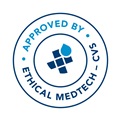
Maie St John
David Geffen School of Medicine at UCLA
USA
Title: A novel modular polymer platform for the treatment of oral and head and neck squamous cell carcinoma
Biography
Biography: Maie St John
Abstract
Oral and Head and neck squamous cell carcinoma (OSCC) is the sixth most common cancer in the world. The primary management of OSCC relies on complete surgical resection of the tumor. Positive margin status is associated with significantly decreased survival. This project focuses on the development of a novel biocompatible modular polymer platform, which will improve the outcome for patients with advanced or recurrent Oral and Head & Neck Squamous Cell Carcinoma (HNSCC). The management of these HNSCC patients poses a considerable challenge to the surgeon and the radiation oncologist. The surgical demand in such a setting is for wider resection or, in some instances when the tumor is fixed to the underlying vital structures, to debulk as much of a large tumor as possible and leave behind the unresectable portions. Unfortunately, local failure in these cases is at least 40% or greater. The ability to decrease mortality, and improve survival for these patients has been a longstanding goal for cancer researchers. We have developed a polymer wrap that has the characteristics such as biocompatibility, is slowly degradable and can serve as a platform to deliver immunomodulators and chemotherapeutic agents so as to most effectively kill tumor cells in the proximity of the polymer application. This polymer wrap is designed to be applied intraoperatively to the surgical bed after removing or debulking the tumor, thus allowing for enhanced post-operative radiation treatment, and also functioning as a platform for the delivery of immunomodulators. Besides its clinically relevant features, the modular nature of this polymer platform provides an elegant approach to future investigations, allowing us to seek out specific molecular targets. This will enable us to dissect underlying mechanisms of immune activation and expansion, which will in turn help us design additional strategies to block the inactivation and death of the cytotoxic effectors in patients with aggressive HNSCC. We are able to build polymers that specifically target each patient’s tumor as we can profile the tumors and then target them selectively on the polymer platform. As more combinations of the polymer platform are developed, direct polymer therapy may play an important role in the armamentarium against oral and head and neck SCCA, as well as many other cancers and human diseases.

